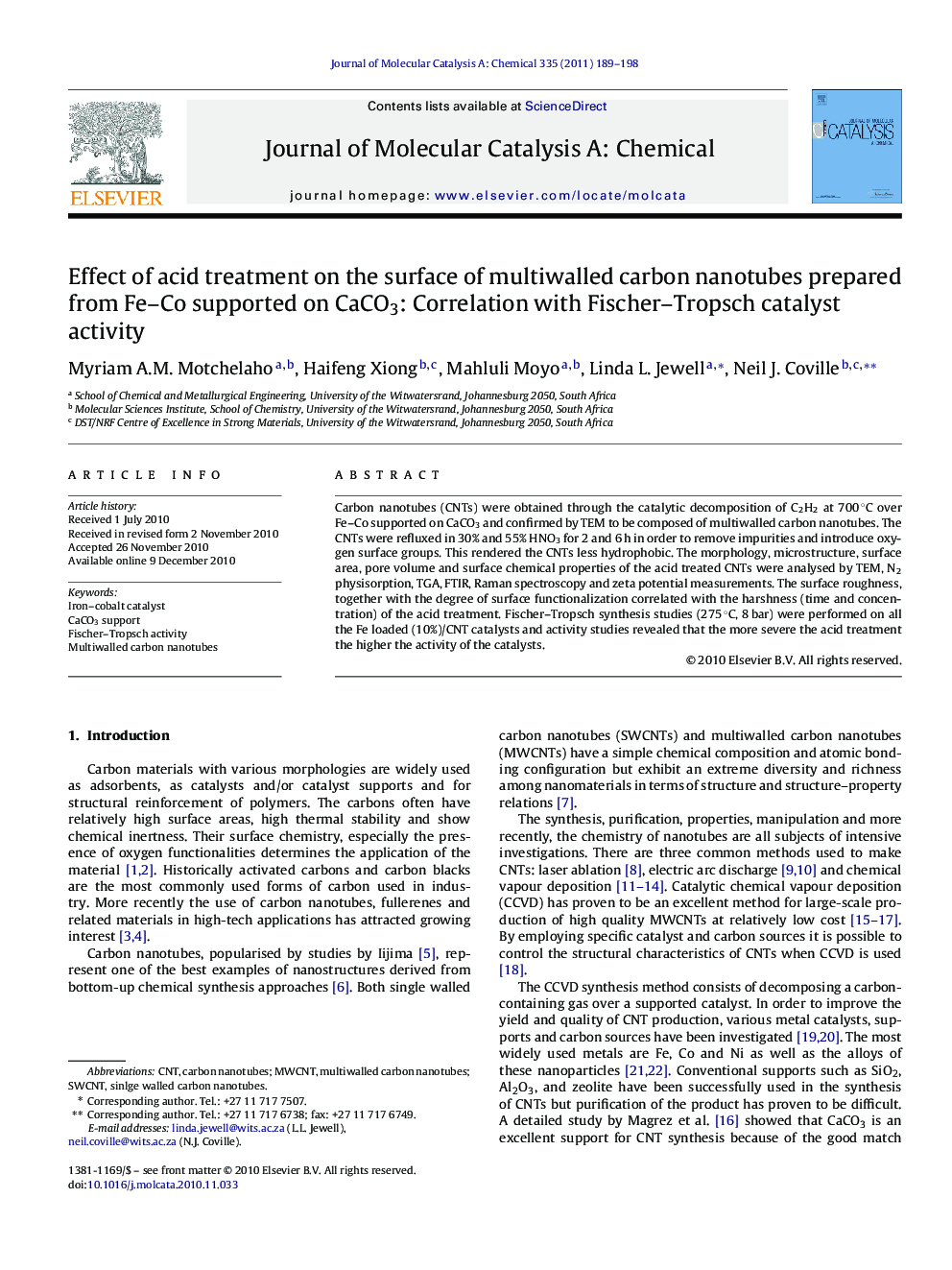| Article ID | Journal | Published Year | Pages | File Type |
|---|---|---|---|---|
| 66582 | Journal of Molecular Catalysis A: Chemical | 2011 | 10 Pages |
Carbon nanotubes (CNTs) were obtained through the catalytic decomposition of C2H2 at 700 °C over Fe–Co supported on CaCO3 and confirmed by TEM to be composed of multiwalled carbon nanotubes. The CNTs were refluxed in 30% and 55% HNO3 for 2 and 6 h in order to remove impurities and introduce oxygen surface groups. This rendered the CNTs less hydrophobic. The morphology, microstructure, surface area, pore volume and surface chemical properties of the acid treated CNTs were analysed by TEM, N2 physisorption, TGA, FTIR, Raman spectroscopy and zeta potential measurements. The surface roughness, together with the degree of surface functionalization correlated with the harshness (time and concentration) of the acid treatment. Fischer–Tropsch synthesis studies (275 °C, 8 bar) were performed on all the Fe loaded (10%)/CNT catalysts and activity studies revealed that the more severe the acid treatment the higher the activity of the catalysts.
Graphical abstractThere is a correlaton between the harshness of the acid treament of carbon nanotubes and catalyst activity when these materials are used as supports for 10% Fe in the Fischer–Tropsch synthesis.Figure optionsDownload full-size imageDownload high-quality image (204 K)Download as PowerPoint slideResearch highlightsCarbon nanotubes were acid refluxed with two different HNO3 concentrations and times. As the severity of acid treatment of carbon nanotubes increases: ▶ the surface morphology becomes rougher and the material becomes less crystalline. ▶ The amount of surface oxygen groups increases and the thermal stability decreases. ▶ The activity of 10% Fe/CNT for Fischer–Tropsch synthesis increases significantly. ▶ The methane selectivity decreases and the C5+ selectivity increases.
